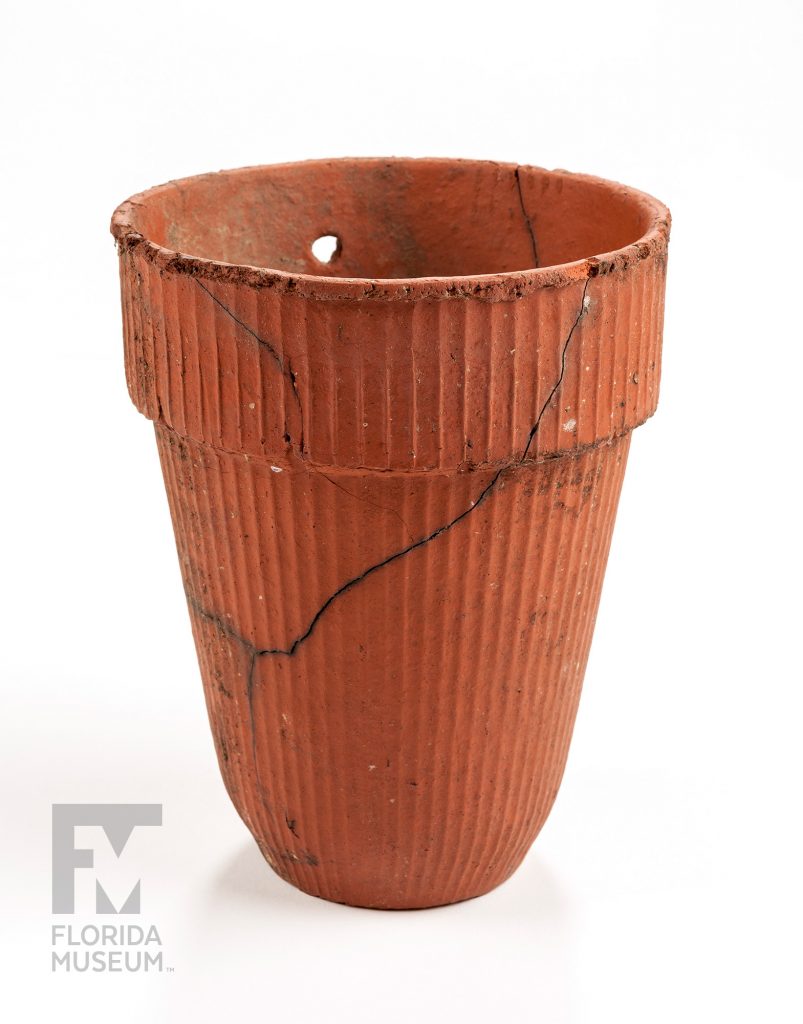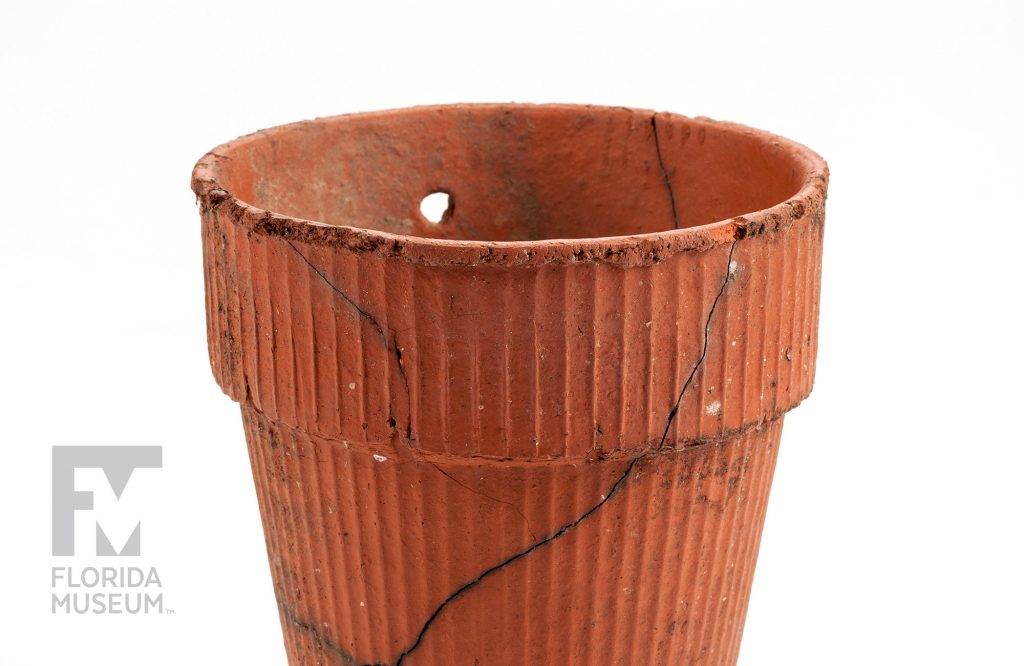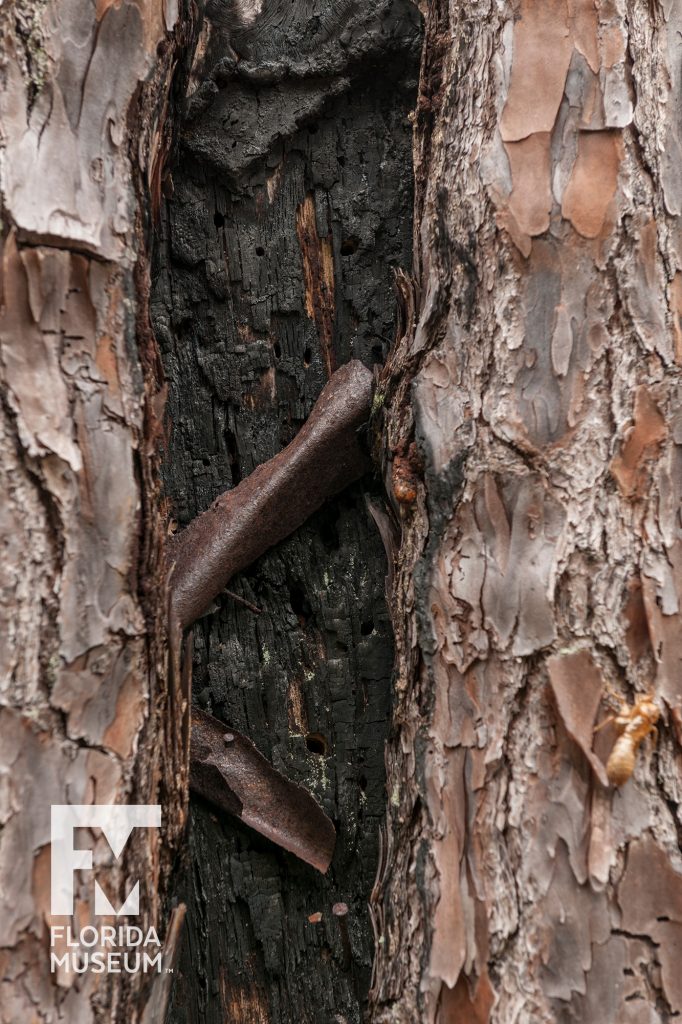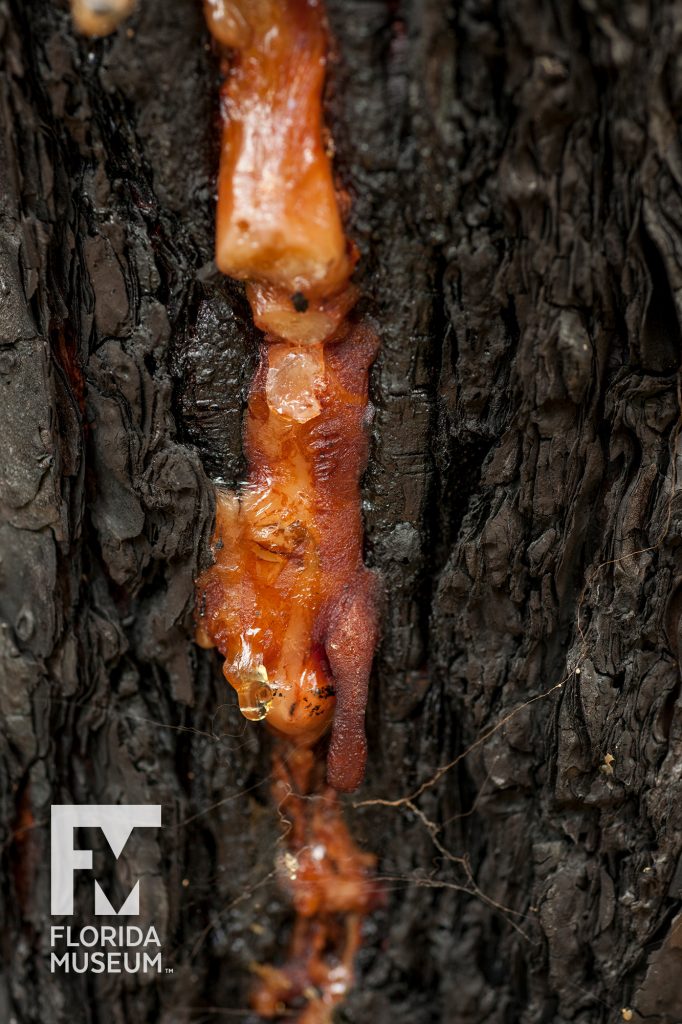This object was on permanent display in the former Northwest Florida: Waterways & Wildlife exhibit, located in the “Florida’s Pitcher Plant Bog” diorama.
Summary
Herty Pot
From Alachua Co., Florida
Dates to ~late 19th, early 20th century
Collection
Story
So I’ve been gradually digging up my front yard to plant native wildflowers and often I turn up these really distinctive pieces of red clay pottery that have distinctive grooves on them. I first thought that maybe they’re some sort of Native American pottery and then I was out hiking in a local pine forest and I came across an intact pot. I took it in to one of the archaeologists and she said, “Oh, it’s a Herty pot.”
It turns out that Herty pots were used to collect turpentine from pine trees. The Southeast used to be covered with longleaf and loblolly pine forest and they would harvest the entire tree, both for timber and to extract pine resin. They used to be called the naval stores industry because the original use was to make pitch for sailing ships.
Charles Herty was a chemist at the University of Georgia and he realized that the Southern forests were being destroyed really quickly by this whole harvesting process. He devised a system for tapping the pine trees to collect the resin.
They would cut V-shaped notches in the pine bark and then put these little clay pots underneath them to catch the pine resin, and then teams of men would travel throughout the forest in wagons emptying these pots into barrels. It was one of the nastiest jobs that you could have in this area of Florida. It was very important to the local economy, but the workers who did this were largely African-American and they weren’t paid well; they were essentially indentured servants.
But when I see these pots out in fragments and pieces in longleaf pine forests here, it reminds me that one person can have a real impact on both conserving forest and in producing an economically important product.
Mark Whitten
Senior Biologist, University of Florida Herbarium*
Florida Museum of Natural History
Exhibit
On display Sept. 23, 2017-Jan. 7, 2018, Rare, Beautiful & Fascinating: 100 Years @FloridaMuseum celebrated the Museum’s rich history. Each Museum collection was asked to contribute its most interesting items and share the stories that make them special. Though the physical exhibit is closed, this companion website remains online, providing an opportunity to experience the Florida Museum’s most treasured specimens.
Exhibit Area: Always on Display
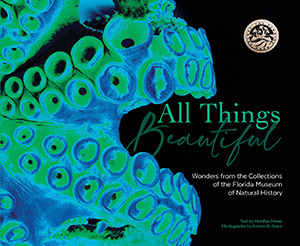 Want to see more? Explore more than 300 breathtaking color photos of plants, animals, fossils and cultural heritage materials from the Florida Museum of Natural History’s collections in the award-winning book All Things Beautiful available from the University Press of Florida.
Want to see more? Explore more than 300 breathtaking color photos of plants, animals, fossils and cultural heritage materials from the Florida Museum of Natural History’s collections in the award-winning book All Things Beautiful available from the University Press of Florida.
*This title was accurate at the time the exhibit was on display in 2017. Please visit the collection website to verify current staff and student information.
